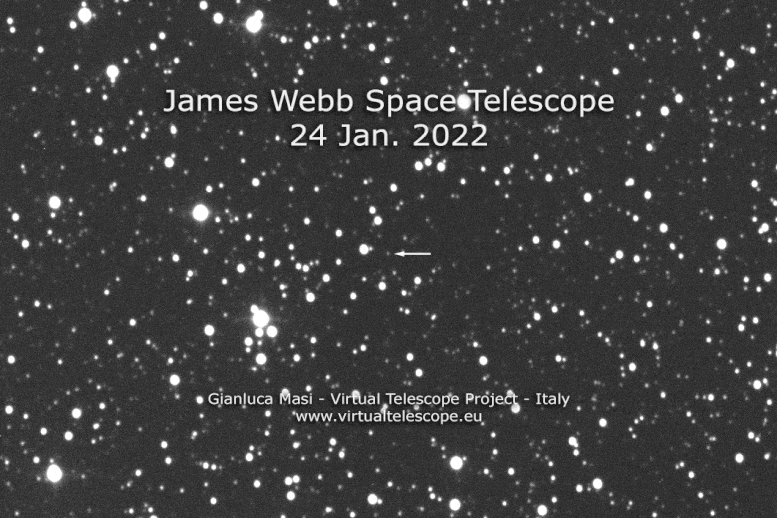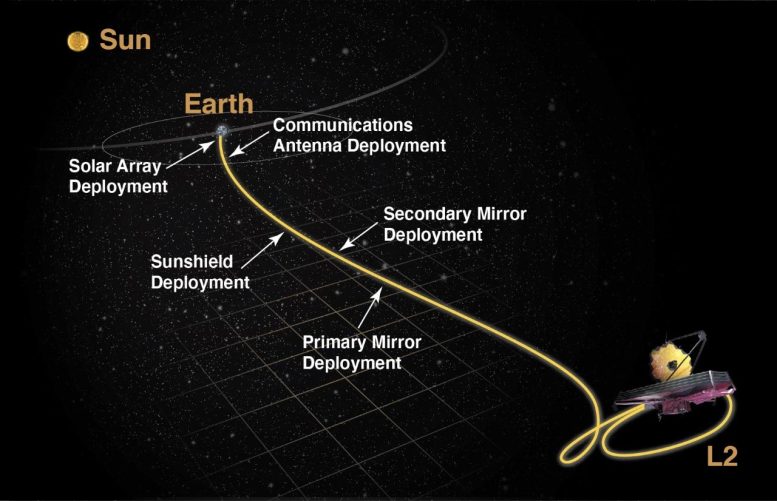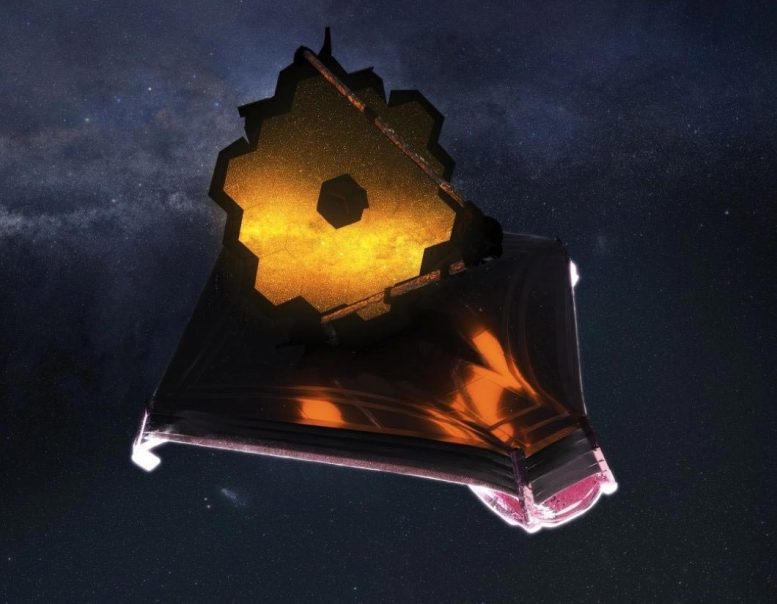The James Webb Space Telescope has had a fantastic month! After launching on Christmas Day, the telescope spent the next several weeks deploying its mirrors, inspecting individual segments, and finally navigating to L2, where it would spend the next 10 to twenty years unraveling the secrets of the universe.
According to NASA Administrator Bill Nelson and the JWST’s Chief Science Communications Officer (CSCO), James Webb will gather light this summer.
To commemorate the event, the Virtual Telescope Project (VTP) collected photographs of James Webb in orbit to give people a taste of what it looks like in space.
Unfortunately, there isn’t much to see there other than a brilliant dot in the night sky. But, like Carl Sagan’s iconic “Pale Blue Dot” photograph of Earth (shot by Voyager 1 on its way out of the Solar System) or Cassini’s “The Day Earth Smiled” image, there’s a tremendous amount of meaning in that little point of light.
The VTP is an advanced astronomy service created in 2006 by the Bellatrix Astronomical Observatory in Ceccano, Italy. The VTP runs two remotely accessible robotic telescopes: the Planewave 17-inch g/6.8 (432/2939 mm) Corrected Dall-Kirkham Astrograph (called “Elena”) and the Celestron 14′′-f/8.4 (356/3000 mm) Schmidt-Cassegrain OTA.
A Photo Coming From 869,920 Miles from Earth
They also provide public online observation sessions, live streaming, expert commentary from their scientific team, and public outreach to individuals all over the globe.
Elena was used to photographing the JWST. on January 24th. In addition to the picture, the VTP generated a short GIF animation that depicts the JWST’s apparent motion against the stars.

This robotic telescope autonomously followed the apparent velocity of the JWST and collected a single 300-single unfiltered exposure that reveals the telescope’s location -indicated by an arrow in the center.
The JWST had arrived at its ultimate destination (L2) when it was photographed, putting it at a distance of about 1.4 million kilometers -869,920 miles from Earth.
While it may seem to be nothing more than a tiny dot against a backdrop of brighter dots (and the blackness of space), these photographs tell the narrative of an ambitious mission that took decades to develop.

Work on the telescope started in 1996, with the intended goal of launching the James Webb Space Telescope in 2007 on a $500 million budget.
Unfortunately, there were several delays and cost overruns owing to a substantial redesign, complications with the sun shield, and the Ariane 5 rocket that would launch it.
Delays were also caused by the COVID-19 pandemic and the fact that the James Webb is the most complicated and advanced space observatory ever designed.
The telescope’s origami-like design (requiring it to fold up to fit inside a payload fairing) necessitated lengthy testing runs on several occasions, and even minor errors necessitated retesting and safety checks.
Construction was ultimately completed in 2016, but an extensive testing procedure remained to be completed. By late 2021, the telescope testing was completed, and the James Webb was delivered to Kourou, French Guiana, for connection with the Ariane 5 rocket.
When the launch eventually took place on Christmas Day, everything went off without a hitch. “It’s genuinely Christmas with all the gifts and everything plus we have a space mission!” said Thomas Zurbuchen, NASA’s assistant administrator for scientific missions.
Construction was ultimately completed in 2016, but an extensive testing procedure remained to be completed. By late 2021, the telescope testing was completed, and the James Webb was delivered to Kourou, French Guiana, for connection with the Ariane 5 rocket.
When the launch eventually took place on Christmas Day, everything went off without a hitch.
It’s genuinely Christmas with all the gifts and everything, and we have a space mission, as NASA’s associate administrator for scientific missions, Thomas Zurbuchen stated.
Now that the mission has reached L2, the crew is waiting for the telescope to attain operational temperature. This will be proceeded by the activation of the telescope’s instruments, final testing, and calibration. If everything goes well, NASA expects the James Webb to begin gathering photons in June 2022. NASA Administrator Bill Nelson stated:
“Webb, welcome home! Congratulations to the team for all of their hard work ensuring Webb’s safe arrival at L2 today. We’re one step closer to uncovering the mysteries of the universe. And I can’t wait to see Webb’s first new views of the universe this summer!”








